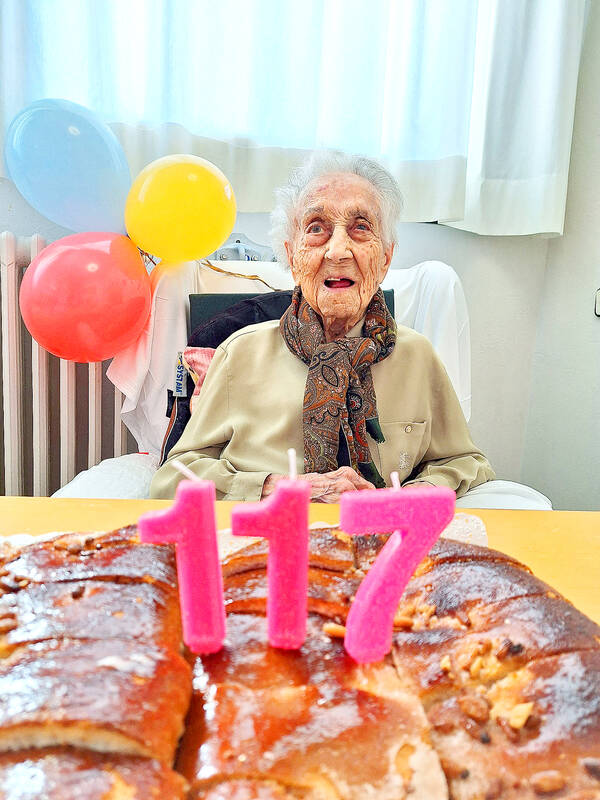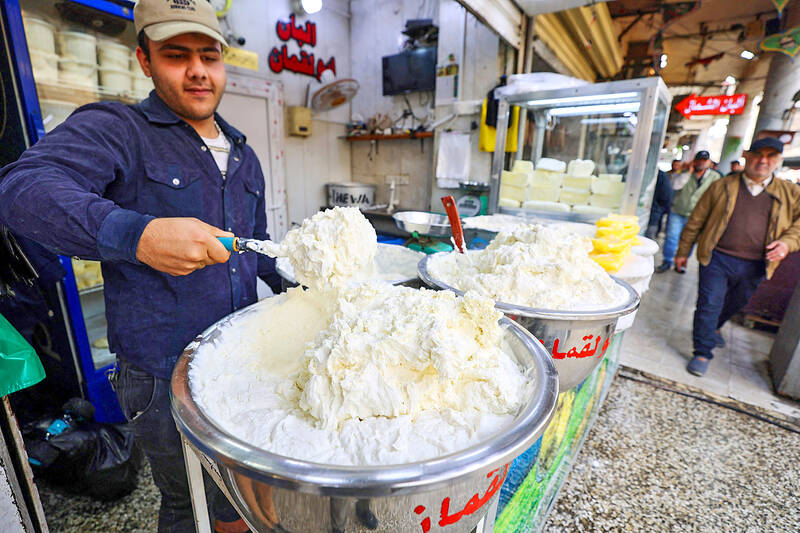Supercentenarians — humans who live beyond 110 years of age — are objects of great fascination in our death-fearing culture. Interviews with them inevitably demand to know that one simple ingredient that is the secret to their extraordinary longevity; was it a shot of whiskey before bedtime, maintaining good friendships, a happy marriage or always having a pet?
In the case of Spain’s Maria Branyas Morera — who was the world’s oldest person until she died at the very ripe old age of 117 last year — one possible answer to that question was yogurt.
The study attempting to get to the bottom of Branyas’s biological good fortune revealed that for the last couple of decades of her life, she ate three servings of yogurt a day. Analysis of her gut microbiome showed unusually high numbers of a beneficial bacteria known as bifidobacterium, which can be boosted by yogurt consumption, and a “microbiome that confers an increased likelihood for a healthy extended lifespan,” the researchers wrote.

Photo: Reuters
Before you rush out to your nearest supermarket and load a trolley with fermented dairy, there are a few things to know about Branyas and yogurt.
The first is she did a lot of things right, not just the yogurt, says gastroenterologist Emad El-Omar, director of the University of New South Wales Microbiome Research Center at St George hospital in Sydney.
LIFESTYLE AND GENES

Photo: AFP
She ate a Mediterranean diet, which is high in vegetables and fruit, wholegrains, legumes, nuts and seeds, and low in processed foods, red meat, added sugar and refined grains. This diet also provides exactly the right complex carbohydrates, dietary fiber and other nutrients for beneficial gut bacteria to thrive on.
“The Mediterranean diet is probably the healthiest diet in terms of its composition and how it feeds the microbiome,” El-Omar says. “If you’re eating a healthy diet and living a healthy lifestyle, that is reflected in the composition and the function of your microbiome, which then works for you instead of against you.”
Branyas didn’t smoke or drink alcohol, she exercised regularly, and spent lots of quality time with friends and family.
And she had good genes.
“She did the first thing right — she got the right parents,” says nutritionist Professor Clare Collins from the University of Newcastle. “She probably lived on a small island, no car, eating lots of seafood, walking up and down the hills, eating vegetables from the local market, and then adapting her dietary patterns as she went.”
So what role, if any, might yogurt have played in Branyas’s staying power?
GUT HEALTH
Yogurt is interesting because it has live bacteria in it, and in particular a type called lactobacillus, says Associate Professor Claus Christophersen, a microbiologist at Edith Cowan University in Perth. This is one of the bacteria that turns milk into yogurt, by feeding on the milk carbohydrates to produce lactic acid during the fermentation process, which then causes the milk proteins to coagulate.
Lactobacillus are also important bacteria for good gut health, although we generally have low levels of them, he says.
“If you have more of them, you tend to drop your pH in your gut, which is a good thing, so that actually keeps pathogens at bay a little bit easier, and it favors more of your beneficial bacteria if your pH is a little bit lower,” Christophersen explains.
Lactobacillus also appear to have beneficial effects on the immune system.
“When we talk about gut health, we often talk about the large intestine, where the bacteria grows,” Christophersen says. “But in the small intestine is where there’s lots of connection with the immune system.”
There’s also evidence that beneficial gut bacteria produce their own antimicrobial substances that help suppress the growth of harmful bacteria, El-Omar says.
“They’re essentially keeping away the nasty guys and allowing that coexistence and natural balance that protects you from infections,” he says.
And increasingly, scientists are coming to understand the positive interactions between the gut microbiome and a range of other body systems, including the brain.
Yogurt is also a good source of these beneficial bacteria because the dairy fats help protect the bacteria from the highly acidic stomach environment, so they can pass through and into the small and large intestine.
CHOOSING CAREFULLY
But not all yogurt is created equal.
“It’s yogurt with live microbes in it, and it’s not squeezy-pouch yogurt with acidity regulators and preservatives or colors and flavors,” Collin says.
The dairy section of any supermarket is filled with a dazzling array of yogurt choices, so Collins recommends choosing carefully.
“You’ve got to go to the supermarket going, ‘I’m standing in the yogurt aisle today, and I’m going to take my time,’” she says.
That includes looking at labels and ruling out the products with lots of numbers — which represent the chemical additives — in the ingredients list.
“Or you can just buy plain Greek yogurt and just grin and bear it when you eat it and it’s really tart, or eat it with a bit of fruit added to it, or a bit of cinnamon on top or something like that,” Collins says.
Once you’ve got your good yogurt, it also helps to eat it regularly, like Branyas did.
“She was having it three times a day; she would have been getting her microbiome community topped up repeatedly all day,” Collins says.

The 1990s were a turbulent time for the Chinese Nationalist Party’s (KMT) patronage factions. For a look at how they formed, check out the March 2 “Deep Dives.” In the boom years of the 1980s and 1990s the factions amassed fortunes from corruption, access to the levers of local government and prime access to property. They also moved into industries like construction and the gravel business, devastating river ecosystems while the governments they controlled looked the other way. By this period, the factions had largely carved out geographical feifdoms in the local jurisdictions the national KMT restrained them to. For example,

The remains of this Japanese-era trail designed to protect the camphor industry make for a scenic day-hike, a fascinating overnight hike or a challenging multi-day adventure Maolin District (茂林) in Kaohsiung is well known for beautiful roadside scenery, waterfalls, the annual butterfly migration and indigenous culture. A lesser known but worthwhile destination here lies along the very top of the valley: the Liugui Security Path (六龜警備道). This relic of the Japanese era once isolated the Maolin valley from the outside world but now serves to draw tourists in. The path originally ran for about 50km, but not all of this trail is still easily walkable. The nicest section for a simple day hike is the heavily trafficked southern section above Maolin and Wanshan (萬山) villages. Remains of

With over 100 works on display, this is Louise Bourgeois’ first solo show in Taiwan. Visitors are invited to traverse her world of love and hate, vengeance and acceptance, trauma and reconciliation. Dominating the entrance, the nine-foot-tall Crouching Spider (2003) greets visitors. The creature looms behind the glass facade, symbolic protector and gatekeeper to the intimate journey ahead. Bourgeois, best known for her giant spider sculptures, is one of the most influential artist of the twentieth century. Blending vulnerability and defiance through themes of sexuality, trauma and identity, her work reshaped the landscape of contemporary art with fearless honesty. “People are influenced by

Ten years ago, English National Ballet (ENB) premiered Akram Khan’s reimagining of Giselle. It quickly became recognized as a 21st-century masterpiece. Next month, local audiences get their chance to experience it when the company embark on a three-week tour of Taiwan. Former ENB artistic director Tamara Rojo, who commissioned the ballet, believes firmly that if ballet is to remain alive, works have to be revisited and made relevant to audiences of today. Even so, Khan was a bold choice of choreographer. While one of Britain’s foremost choreographers, he had never previously tackled a reimagining of a classical ballet, so Giselle was